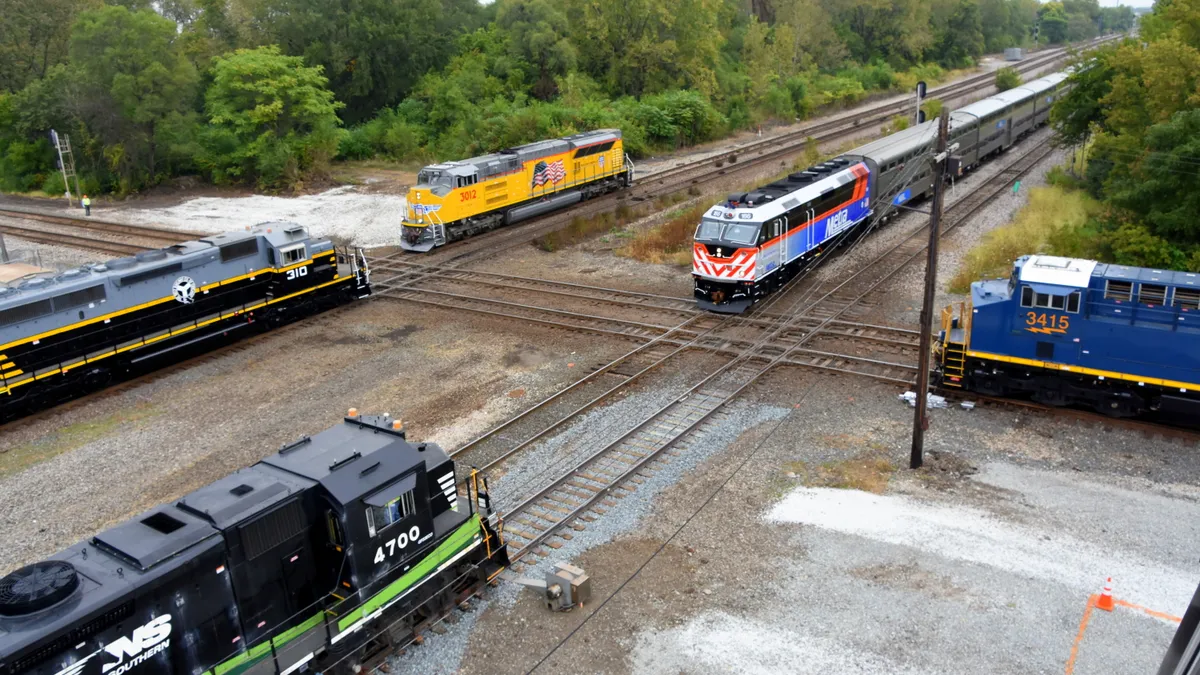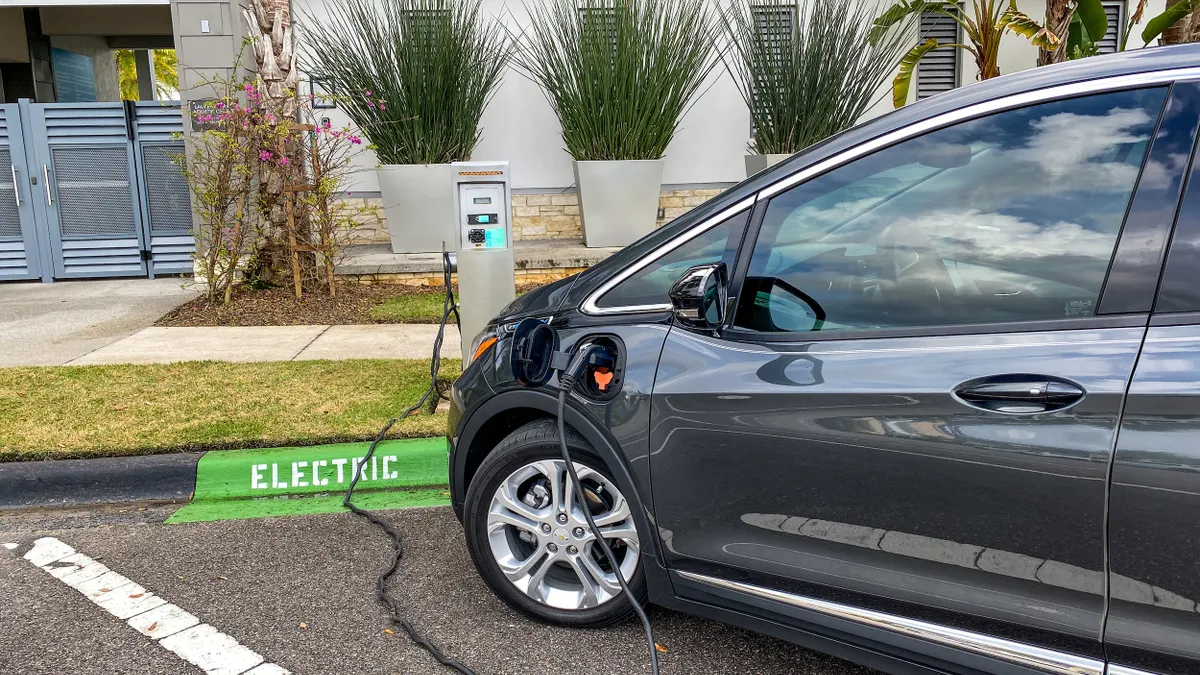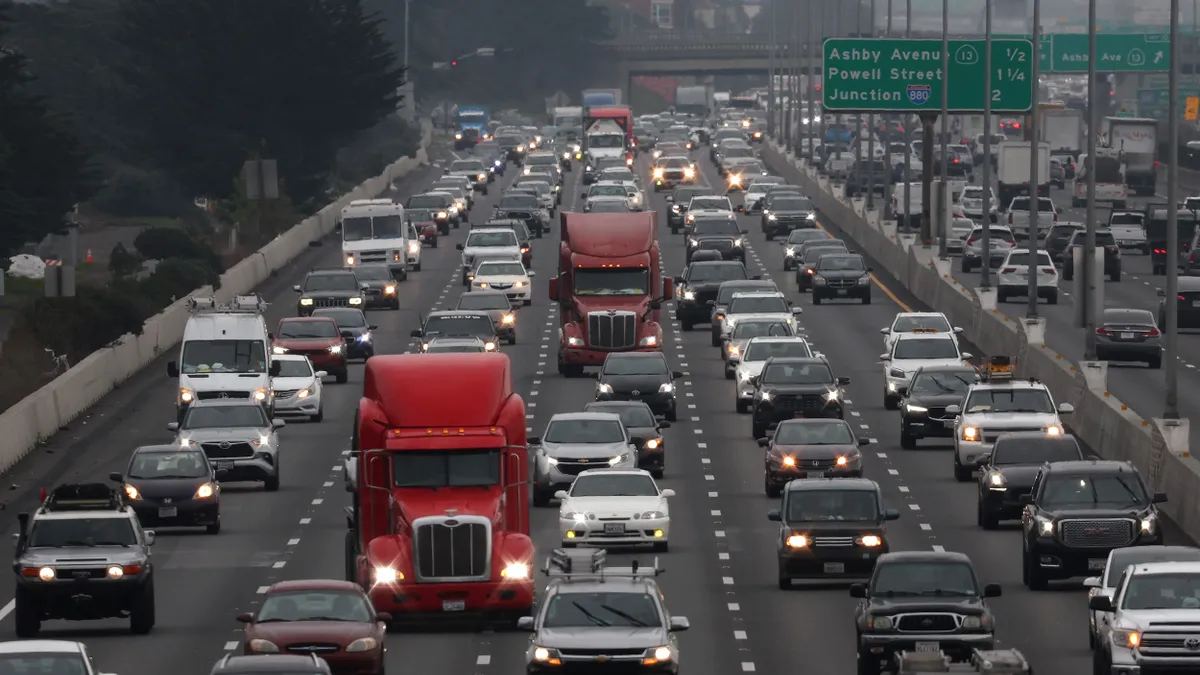As goods and raw materials make their way to all parts of the country, there's a significant possibility they'll pass through Chicago, a main transportation hub for all of North America and the busiest rail hub in the U.S. However the volume of rail traffic, and its expected doubling over the next 30 years, has created serious congestion challenges that the city and its partners are working collaboratively to solve.
The root of the problem
Six of North America’s major freight rail companies — BNSF, Canadian National, Canadian Pacific, CSX, Norfolk Southern and Union Pacific — are split among different regions, but they all converge in Chicago. The region's rail infrastructure was built more than a century ago and investments haven’t kept pace with volume increases and changes in freight types, meaning "Chicago has become the largest U.S. rail freight chokepoint," said Mike Claffey, Chicago Department of Transportation (CDOT) spokesman.
The city also has an abundance of shared freight rail infrastructure. Traditionally, carriers own and operate on their own tracks, but mergers and acquisitions over the last century have led to Chicago housing a significant amount of rail infrastructure that is owned by one carrier while others have rights to operate on it.
"That creates a lot of complications in terms of who is going to invest in this and how it’s done. That led to, over the course of decades, insufficient investment in Chicago," said Jeffrey Sriver, director of transportation planning and programming at CDOT. "Sometimes something that's everybody's problem ends up being nobody's problem."
The situation is further complicated by freight rail sharing tracks in Chicago with Metra, the country’s second-busiest commuter rail system, and more than a dozen Amtrak passenger routes. Each day, a whopping 1,300 freight and passenger trains travel through this hub, as does one-quarter of the country’s overall freight traffic. Commuter trains take priority on shared tracks because they’re shorter and travel faster than freight trains, adding to freight rail back-ups.
"Sometimes something that's everybody's problem ends up being nobody's problem."

Jeffery Sriver
Director of Transportation Planning and Programming, CDOT
A number of factors contribute to the increase in freight rail volume, but it’s all "a function of the long-term growth of the national economy," Sriver said, not the least of which is America’s booming e-commerce sector. In addition to higher demand for finished goods and consumer products, economic strength drives a greater need for raw materials, which often are most efficiently and cost effectively transported by rail.
The transportation industry as a whole has become more adept at intermodal freight handling, in which the most efficient transportation mode is used at every leg of a shipment’s journey, Sriver said. The same shipping container that travels cross-country via train can be sent overseas by boat and then complete its journey on a truck trip. Over the past few decades, efficiency-boosting measures have contributed to long-haul truck trips decreasing and transitioning to more regional truck trips, while long-distance rail volume has increased. "Intermodal freight handling has grown tremendously on the railroads," Sriver said.
Fixing the flow
Chicago and its stakeholders are not blind to the growing congestion problem; however, solutions are complex and require cooperation from numerous parties.
"To handle all that traffic and prepare for the future, America’s railroads are working to better manage operations in the region and increase capacity," said Jessica Kahanek, director of media relations for the Association of American Railroads (AAR).
The congestion problem came to a head in 1999 when a major blizzard essentially shut down Chicago and caused disruptions to all rail service, some that lasted for months. After that, a consortium of freight, passenger and commuter railroads created the Chicago Planning Group (CPG), and then the Chicago Transportation Coordination Office. More recently, the groups opened the tech-forward Chicago Integrated Rail Operations Center (CIROC) in December 2015.
CIROC is a 24/7 nerve center that monitors both freight and passenger train operations and facilitates communication. The carriers’ employees at the center keep an eye on metrics including train schedules and routing, and they view rail tracks and real-time train flow via numerous cameras that stream video to shared screens inside the communications center. Carriers' employees collaborate to ensure efficient train movement throughout the metropolitan area and to prevent system clogging, especially during rush hour.
"CIROC allows the railroads to better communicate on an ongoing basis to anticipate potential operational problems, review train routing and schedules and improve their ability to mobilize the right equipment, materials, and personnel to keep trains moving through the city," Kahanek said. "This sort of planning and coordination is especially important during winter weather events."
Using a common operational picture (COP) to integrate and monitor all carriers’ local operations in one facility is a concept unique to Chicago. In most places, each carrier operates out of its own facility and must coordinate remotely with other carriers as necessary. The COP approach at CIROC allows for more rapid, thorough collaboration to alleviate issues and delays before they even arise.
While CIROC deals with the operations side, the Chicago Region Environmental and Transportation Efficiency (CREATE) Program — another solution born from the 1999 snowstorm — addresses the multimodal infrastructure improvements side. CREATE increases capacity, whereas CIROC facilitates the best use of the available capacity. "Without either one, you really can’t operate well. The two really need to work together," CDOT’s Sriver said.
CREATE represents a public-private partnership between CDOT, AAR and the Illinois Department of Transportation. The $4 billion program launched in 2003 and consists of 70 interrelated infrastructure projects to improve the Chicago region’s rail and roadway transportation network. Of those, 29 projects already have been completed, five are under construction, 17 are in various design and planning stages and the others will come down the pike in the future.
Some of the projects strictly benefit freight trains, whereas others get the freight and passenger trains out of each other’s way to cut down on delays and service interruptions. The projects primarily involve improving tracks and signals, rebuilding city streets and sidewalks under existing railroad viaducts and building bridges to separate freight trains from commuter trains or city streets. The latter two types of projects improve infrastructure and safety for city street users — drivers, cyclists and pedestrians — as well as for trains.
The largest and most complicated CREATE project broke ground in October and gained a fair amount of attention when Chicago Mayor Rahm Emanuel, Senator Dick Durbin and U.S. Secretary of Transportation Elaine Chao attended the ceremony, representing their respective governments which contributed funding to the $474 million "75th Street Corridor Improvement Project."
The project, which consists of four individual projects, is so large that the scope of work was separated into two halves for ease of funding and construction. The main elements involve constructing a bridge to separate passenger and freight rail trains and separating rail from the road to reduce the currently high rate of delays, train idling and congestion in neighborhoods on Chicago’s South Side.
Just like most major projects, securing CREATE Program funding has been one of the largest barriers to achieving goals. It has no dedicated funding, such as a tax, so "we pull together funding on a project-by-project basis," Sriver said.
The freight railroads, Amtrak, Metra commuter railroad, city, county, state and federal government all have contributed funding, and launching the first half of the 75th Street project has served as a particularly notable milestone. "If we can achieve that really huge one, it signals that eventually we can get all of the remaining smaller projects done, too," Sriver said.
Infrastructure and technological updates, in some cases, have meant simply "getting the system out of the 1940s," Sriver said. For example, up until about 15 years ago, an employee physically had to stand in a room and throw manual switches at Chicago’s train junctions, and operators had to exit their trains to throw switches. Some of the CREATE projects involve upgrading those switches to be more technologically advanced and remotely controlled.
"These things now can be done by somebody sitting at a desk. … Those are huge efficiency increases for the railroads," Sriver said. "It’s not automated cars or some fancy technology that's speculative, just technology that hadn’t made its way here because of institutional barriers that have now been overcome."
The CREATE projects, both individually and collectively, will do more than merely improve freight rail, passenger rail and highway operations in the Chicago metropolitan area, CDOT’s Claffey said. In addition to allowing an extra 50,000 freight trains to travel through Chicago annually by 2051, “[they are] also providing community mobility, safety, air quality and economic benefits.”
The CREATE Program is expected to generate $31.5 billion in economic benefits over 30 years. CDOT says the capacity and efficiency improvements will reduce lost time from passenger train, freight train, truck, motorist and bus delays; avoid an estimated 200 vehicle-train crashes over 30 years; eliminate 2,800 metric tons of emissions per year from idling vehicles waiting for trains to pass; and create jobs needed to complete the infrastructure improvements and movement of additional cargo.
During the 15 years that the CREATE Program has been in the works, the public and private partners sometimes faced skeptics’ questions, like: "Are they ever going to be able to do this? Can they really pull this off?" Sriver said. "And we are."




















